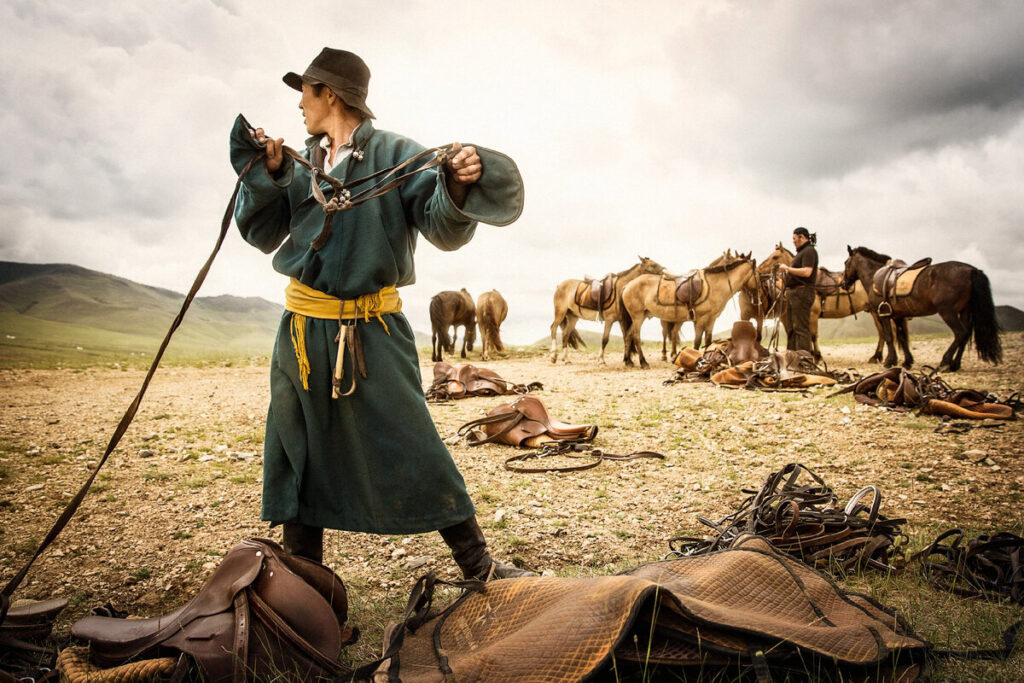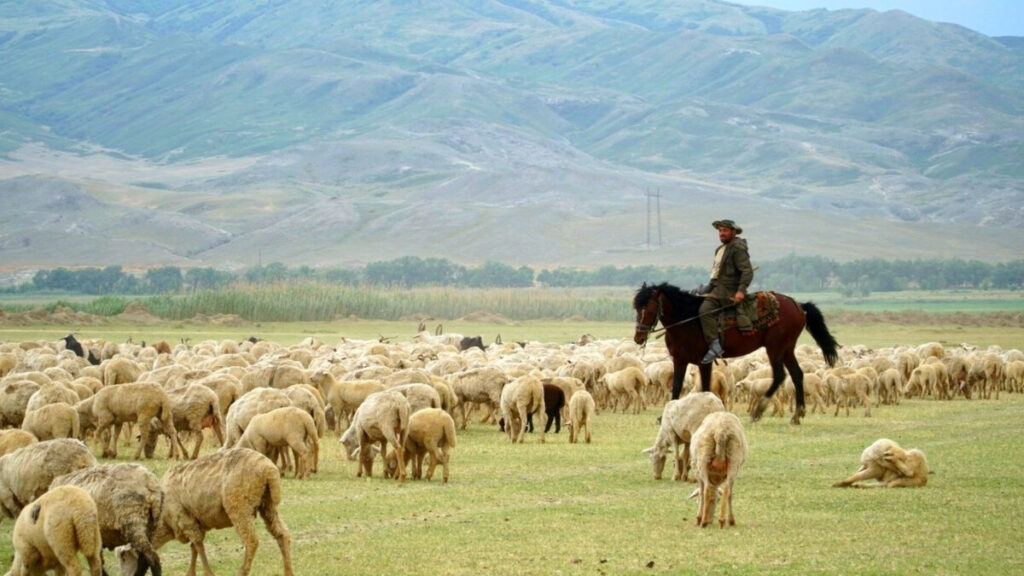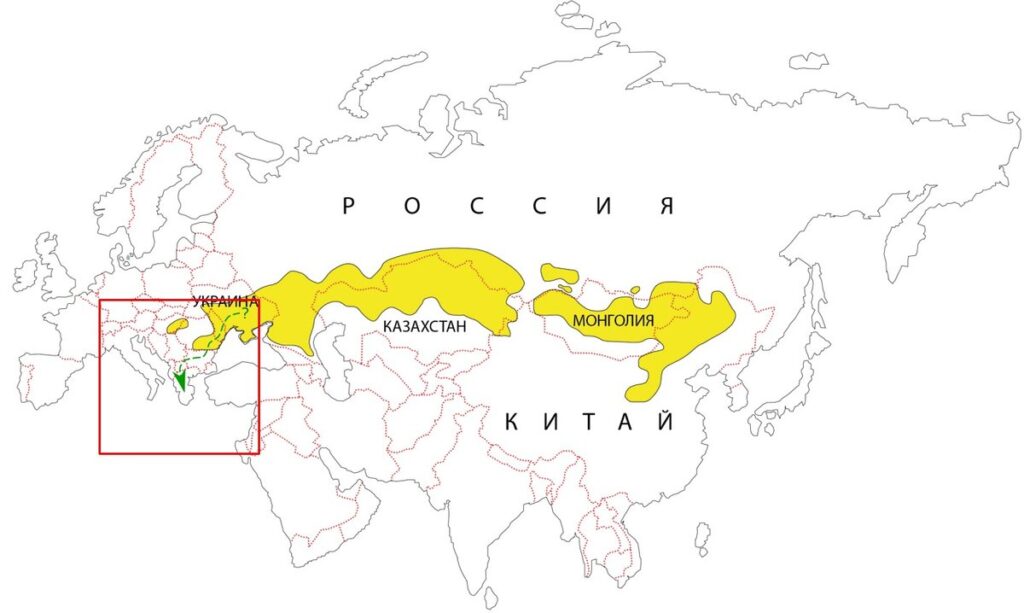In many people’s understanding, a nomad is a herdsman who roams freely on the steppe, following his herds. Knowing neither the purpose nor the direction, he moves all his life, occasionally crossing paths with the same inhabitants of the steppe. But in reality such representations are just a «spherical horse in a vacuum». No nomadic group could afford to move without any system. We will talk about how they actually lived now.

To one degree or another, all primitive people were nomads because they were forced to move due to the depletion of natural resources. If the nuts and berries in the nearby forest were eaten and the herds of animals began their seasonal migrations, the human community had to leave as well. Depending on the wealth of the region, they made up to ten migrations a year, moving around their territory in a roughly circular pattern. It was normal for them not to go beyond its boundaries — other people could live there, who would hardly tolerate competitors.
But after the end of the last ice age, the Neolithic revolution began. First in the most favorable places, and then almost everywhere, certain groups of people began to shift from hunting and gathering to a more productive producing economy. Food became more plentiful, meals became regular. Slow population growth began.
Most human groups, regardless of where they were located, began farming and herding almost simultaneously. To be more precise, farming even earlier, because these or those animals were domesticated in different places and at different times. And so it went on until the climate began to deteriorate as a result of a series of successive cold spells. 8.2 thousand years ago, 5.9 thousand years ago, 4.2 thousand years ago, the temperature of the planet dropped dramatically, and this made it impossible for some groups of people to farm.
The first nomadic pastoralist community emerged in the Southern Levant region between 8.5 and 6.5 millennia BC. But then this way of life was adopted in all regions that were characterized by aridity, significant temperature fluctuations, poor soils and water scarcity. Farming was not feasible here, and the best strategy turned out to be the breeding of herbivorous animals. The main belt of nomadism is the steppes and semi-deserts of Eurasia, the dry African savannahs, and the steppe zones of North and South America. The tundra should not be forgotten either.

Since herds of animals sooner or later ate the grass, it was necessary to move to a new pasture. Depending on the richness of the region, migrations were carried out 2-4 times a year — usually from summer (mountainous) to winter (plain) pastures. Often, on at least one section of this route, pastoralists built semi-permanent dwellings for themselves and shelters for their livestock.
Because each family moves over a strictly fixed and relatively small area, it always knows where neighboring families are. Families come together to protect their herds and coordinate their complex grazing cycles. This leads to the formation of larger communities, chief among which is the clan, a significant association that goes back to a common (often mythical) ancestor. Finally, clans eventually unite into tribes in order to be able to survive in times of crisis.
Small groups of nomads are completely egalitarian, i.e. ordinary community members are equal to each other. They have no power over themselves, as they do not actually need it. But someone was more fortunate, someone less fortunate, and this leads to property stratification and the formation of larger herds. And the people who had significant ones had more weight in nomadic society. Political and military leaders were recruited from them. However, the very way of life of pastoralists led to the fact that their powers extended only to foreign policy and war. Therefore, nomads did not have a complexly organized system of power, but acted in the form of loosely organized unions, which could be joined by groups of other ethnic origins, if they saw sense in it and if they believed in the leader. In the future, this would lead many nomadic peoples of Eurasia to acquire a mixed racial type.
Since animal herds are entirely dependent on grass and water, pastoralists are more influenced by the forces of nature. A mild drought can lead to starvation, and famine can lead to an urge to migrate elsewhere. But although the steppe is large, it has its own masters. Therefore, the resettlement of one people led to the beginning of the «domino effect» and resettlement throughout the Eurasian steppes — from Hungary to Manchuria.

For the same reason nomads often attacked sedentary peoples — they sought to compensate for their lack of resources at their expense. Usually this was done through trade — in exchange for horses and other livestock, as well as animal skin, they could get food, metals and luxury goods, which for objective reasons could not produce themselves. Nevertheless, the demand of nomads for such products exceeded the need of sedentary peoples for goods from the steppe. This led to more intensive raids and military campaigns, and in time — to the conquest of farmers and imposing tribute on them.
But the farmer lives off domesticated plants, and the herdsman lives off domesticated animals. The latter are higher on the food chain, which means that keeping them requires more territory and resources. This leads to a comparatively small number of nomadic peoples. However, they also have a trump card up their sleeve — the early domestication of the horse, developed horse breeding, the invention of the stirrup, horse archery, high mobility, the tactic of «hit and run», a way of life that in itself forms warriors, and most importantly — the ability to divert a large number of men from economic activity without significant damage to the economy, led to the fact that the nomads could field a larger and better trained mounted army. Therefore, many nomadic alliances became empire builders and overthrowers. However, if this or that nomadic group of the enemy was not to the teeth, it often disintegrated before the emergence of a new strong leader — because the individual clans were actually autonomous.
In addition, the very way of life of pastoralists had a feature that made nomadic states extremely fragile. Lack of pastures led to attacks on neighbors, attacks on neighbors led to the formation of a powerful power and decisive territorial expansion, the latter led to an increase in livestock and subsequent population growth. And population growth led to land scarcity, subsequent feuds, and a repeat of the cycle all over again. Therefore, each steppe empire usually did not last more than a couple of hundred years, and many yesterday’s nomads moved to more favorable territories and adopted a sedentary way of life.

As human civilization developed, the agriculturalists grew significantly in numbers. Whereas the number of nomads for resource reasons remained virtually unchanged. Neighbors could already give a decent fight back, and after the invention of firearms, their advantage became overwhelming. This led to the fact that in the new times most of the nomadic groups were incorporated into the sedentary powers. Their way of life began to change gradually — somewhere under the influence of neighboring farmers, somewhere by voluntary and compulsory means. Eventually, by the middle of the 20th century, there were virtually no nomads left in the world, although small groups of them can still be found in some eastern countries.
